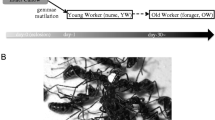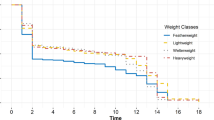Abstract
Studies on many species have suggested that animals across the taxa remain behaviourally motionless for a significant part of their active phase. It is true of social insects such as ants, which constitute a considerable portion of insect biomass. It is hypothesized that behavioral quiescence ensures the conservation of energy. In many ecologically demanding situations, organisms lose a significant part of their rest. Many animals become more active before and during mating to defend territories, compete with rivals, engage in the nuptial flight and prepare to take care of the brood and raise the first batch of workers. Although we know mating changes activity in ants, there is negligible information on how mating affects the amount of rest. Here, I report that the queens of the carpenter ant Camponotus compressus lose a significant amount of rest immediately after mating, and this change can be seen up to 1-year post-mating. Before mating, males and females are active simultaneously, which may be critical for their nuptial flight. The total rest of the unmated queens is less than males during the day and night. After mating, mated queens lose a significant amount of rest. I was interested in observing whether these changes are transient and are restricted to a small window after mating, so I housed ant queens (unmated and mated) in the lab for a year. After 1 year, mated queens exhibit a lower amount of rest than unmated queens of the same age and freshly mated queens. These results suggest ants forgo their rest to adapt to the new phase of life after mating, which involves immediate searching of nest sites, building nests and raising offspring.


Similar content being viewed by others
Data availability
Data will be made available upon request.
References
Allada R, Siegel JM (2008) Unearthing the phylogenetic roots of sleep. Curr Biol 18:R670-679. https://doi.org/10.1016/j.cub.2008.06.033
Arnqvist G, Nilsson T (2000) The evolution of polyandry: multiple mating and female fitness in insects. Anim Behav 60:145–164. https://doi.org/10.1006/anbe.2000.1446
Avila FW, Sirot LK, Laflamme BA, Rubinstein CD, Wolfner MF (2011) Insect seminal fluid proteins: identification and function. Annu Rev Entomol 56:21. https://doi.org/10.1146/annurev-ento-120709-144823
Belsky JE, Camp AA, Lehmann DM (2020) The importance of males to bumble bee (Bombus species) nest development and colony viability. InSects 11:506. https://doi.org/10.3390/insects11080506
Bhatkar A, Whitcomb WH (1970) Artificial diet for rearing various species of ants. Fla Entomol 53:229–232
Boomsma JJ, Huszár DB, Pedersen JS (2014) The evolution of multiqueen breeding in eusocial lineages with permanent physically differentiated castes. Anim Behav 92:241–252. https://doi.org/10.1016/j.anbehav.2014.03.005
Camargo RS, Forti LC, Fujihara RT, Roces F (2010) Digging effort in leaf-cutting ant queens (Atta sexdens rubropilosa) and its effects on survival and colony growth during the claustral phase. Insectes Soc 58:17–22. https://doi.org/10.1007/s00040-010-0110-5
Campbell SS, Toblar I (1984) Animal sleep: a review of sleep duration across phylogeny. Neurosci Biobehav Rev 8:269–300. https://doi.org/10.1016/0149-7634(84)90054-x
Cassill DL, Brown S, Swick D, Yanev G (2009) Polyphasic wake/sleep episodes in the fire ant, Solenopsis Invicta. J Insect Behav 22:313–323. https://doi.org/10.1007/s10905-009-9173
Chapman T, Bangham J, Vinti G, Seifried B, Lung O, Wolfner MF, Smith HK, Partridge L (2003) The sex peptide of Drosophila melanogaster: female post-mating responses analyzed by using RNA interference. Proc Natl Acad Sci USA 100:9923–9928. https://doi.org/10.1073/pnas.1631635100
Charbonneau D, Dornhaus A (2015) Workers ‘specialized’on inactivity: behavioral consistency of inactive workers and their role in task allocation. Behav Ecol Sociobiol 69:1459–1472. https://doi.org/10.1007/s00265-015-1958-1
Charbonneau D, Hillis N, Dornhaus A (2015) ‘Lazy’ in nature: ant colony time budgets show high ‘inactivity’ in the field as well as in the lab. Insectes Soc 62:31–35. https://doi.org/10.1007/s00040-014-0370-6
Cole BJ (1985) Size and behavior in ants: constraints on complexity. Proc Natl Acad Sci USA 82:8548–8551. https://doi.org/10.1073/pnas.82.24.8548
Dubowy C, Sehgal A (2017) Circadian rhythms and sleep in Drosophila melanogaster. Genetics 205:1373–1397. https://doi.org/10.1534/genetics.115.185157
Dunlap JC, Loros JJ, DeCoursey PJ (2004) Chronobiology: biological timekeeping. Sinauer Associates
Eban-Rothschild AD, Bloch (2008) Differences in the sleep architecture of forager and young honeybees (Apis mellifera). J Exp Biol 211:2408–2416. https://doi.org/10.1242/jeb.016915
Gadagkar R, Joshi NV (1984) Social organisation in the Indian wasp ropalidia cyathiformis (Fab.)(hymenoptera: vespidae). Z Tierpsychol 64:15–32. https://doi.org/10.1111/j.1439-0310.1984.tb00350.x
Garbe DS, Vigderman AS, Moscato E, Dove AE, Vecsey CG, Kayser MS, Sehgal A (2016) Changes in female Drosophila sleep following mating are mediated by SPSN-SAG neurons. J Biol Rhythms 31:551–567. https://doi.org/10.1177/0748730416668048
Haddow A, Yarrow IH, Lancaster GA, Corbet PS (1966) Nocturnal flight cycle in the males of African doryline ants (Hymenoptera: Formicidae). Proc R Entomol Soc Lond Ser A Gener Entomol 41:103–106
Helanterä H (2016) An organismal perspective on the evolution of insect societies. Front Ecol Evol 4:6. https://doi.org/10.3389/fevo.2016.00006
Hendricks JC, Finn SM, Panckeri KA, Chavkin J, Williams JA, Sehgal A, Pack AI (2000) Rest in Drosophila is a sleep-like state. Neuron 25:129–138. https://doi.org/10.1016/s0896-6273(00)80877-6
Herbers JM (1981) Time resources and laziness in animals. Oecologia 49:252–262. https://doi.org/10.1007/BF00349198
Hölldobler B, Wilson EO (1990) The ants. Harvard University Press, Cambridge
Hölldobler B, Wilson EO (2009) The superorganism: the beauty, elegance, and strangeness of insect societies. WW Norton & Company, New York
Isaac RE, Li C, Leedale AE, Shirras AD (2010) Drosophila male sex peptide inhibits siesta sleep and promotes locomotor activity in the post-mated female. Proc Biol Sci 277:65–70. https://doi.org/10.1098/rspb.2009.1236
Jandt JM, Robins NS, Moore RE, Dornhaus A (2012) Individual bumblebees vary in response to disturbance: a test of the defensive reserve hypothesis. Insectes Soc 59:313–321. https://doi.org/10.1007/s00040-012-0222-1
Julian GE, Gronenberg W (2002) Reduction of brain volume correlates with behavioral changes in queen ants. Brain Behav Evol 60:152–164. https://doi.org/10.1159/000065936
Kaiser W (1988) Busy bees need rest, too. Behavioural and electromyographical sleep signs in honeybees. J Comp Physiol A 163:565–584. https://doi.org/10.1007/BF00603841
Kaiser W (2002) Honeybee sleep is different from chill coma-behavioural and electrophysiological recordings in forager honeybees. J Sleep Res 11:115–117
Karen SH, Sehgal A (2005) Drosophila melanogaster: an insect model for fundamental studies of sleep. Methods Enzymol 393:772793. https://doi.org/10.1016/S0076-6879(05)93041-3
Keller L (1995) Social life: the paradox of multiple-queen colonies. Trends Ecol Evol 10:355–360. https://doi.org/10.1016/s0169-5347(00)89133-8
Koh K, Evans JM, Hendricks JC, Sehgal A (2006) A Drosophila model for age-associated changes in sleep: wake cycles. Proc Natl Acad Sci USA 103:13843–13847. https://doi.org/10.1073/pnas.0605903103
Li J, Vitiello MV, Gooneratne NS (2018) Sleep in normal aging. Sleep Med Clin 13:1–11. https://doi.org/10.1016/j.jsmc.2017.09.001
Liberti J, Görner J, Welch M, Dosselli R, Schiøtt M, Ogawa Y, Castleden I, Hemmi JM, Baer-Imhoof B, Boomsma JJ, Baer B (2019) Seminal fluid compromises visual perception in honeybee queens reducing their survival during additional mating flights. Elife 8:e45009. https://doi.org/10.7554/eLife.45009
Liu PC, Hao DJ (2019) Behavioural and transcriptional changes in post-mating females of an egg parasitoid wasp species. R S Open Sci 6:181453
Lone SR, Sharma VK (2008) Exposure to light enhances pre-adult fitness in two dark-dwelling sympatric species of ants. BMC Dev Biol 8:113. https://doi.org/10.1186/1471-213X-8-113
Lone SR, Chakravarthi A, Sharma VK (2012) Sex and age related changes in the locomotor activity and phototactic behaviors of two closely related species of Camponotus ants. J Insect Physiol 58:75–82. https://doi.org/10.1016/j.jinsphys.2011.09.017
Maistrello L, Sbrenna G (1999) Behavioural differences between male and female replacement reproductives in Kalotermes flavicollis (Isoptera, Kalotermitidae). Insectes Soc 46:186–191. https://doi.org/10.1007/s000400050131
Manfredini F, Romero AE, Pedroso I, Paccanaro A, Sumner S, Brown M (2017) Neurogenomic signatures of successes and failures in life-History transitions in a key Insect pollinator. Genome Biol Evol 9:3059–3072. https://doi.org/10.1093/gbe/evx220
McCluskey ES (1965) Circadian-rhythms in male-ants of five diverse species. Science 150:1037–1039. https://doi.org/10.1126/science.150.3699.1037
McCluskey ES, Carter CE (1969) Loss of rhythmic activity in female ants caused by mating. Comp Biochem Physiol 31:217–226. https://doi.org/10.1016/0010-406x(69)91650-8
Mccluskey ES (1967) Circadian rhythms in female ants, and loss after mating flight. Comp Biochem Physiol 23:665–677. https://doi.org/10.1016/0010-406x(67)90418-5
Moore D (2001) Honey bee circadian clocks: behavioral control from individual workers to whole-colony rhythms. J Insect Physiol 47:843–857. https://doi.org/10.1016/S0022-1910(01)00057-9
Patke A, Young MW, Axelrod S (2020) Molecular mechanisms and physiological importance of circadian rhythms. Nat Rev Mol Cell Biol 21:67–84. https://doi.org/10.1038/s41580-019-0179-2
Peschel N, Helfrich-Förster C (2011) Setting the clock–by nature: circadian rhythm in the fruitfly Drosophila melanogaster. FEBS Lett 585:1435–1442. https://doi.org/10.1016/j.febslet.2011.02.028
Pittendrigh CS, Daan SJ (1976) A functional analysis of circadian pacemakers in nocturnal rodents. Comp Physiol 106:223–252. https://doi.org/10.1007/BF01417860
Richards J, Gumz ML (2013) Mechanism of the circadian clock in physiology. Am J Physiol Regul Integr Comp Physiol 304:R1053–R1064. https://doi.org/10.1152/ajpregu.00066.2013
Roffwarg HP, Muzio JN, Dement WC (1966) Ontogenetic development of the human sleep-dream cycle: The prime role of “dreaming sleep" in early life may be in the development of the central nervous system. Science 152:604–619. https://doi.org/10.1126/science.152.3722.604
Ronce O (2007) How does it feel to be like a rolling stone? Ten questions about dispersal evolution. Annu Rev Ecol Evol Syst 38:231–253. https://doi.org/10.1146/annurev.ecolsys.38.091206.095611
Seugnet L, Suzuki Y, Donlea JM, Gottschalk L, Shaw PJ (2011) Sleep deprivation during early-adult development results in long-lasting learning deficits in adult Drosophila. Sleep 34:137–146. https://doi.org/10.1093/sleep/34.2.137
Sharma VK (2003) A simple computer-aided device for monitoring activity of small mammals and insects. Biol Rhythm Res 34:3–12. https://doi.org/10.1076/brhm.34.1.3.14078
Sharma VK, Lone SR, Goel A, Chandrashekaran MK (2004a) Circadian consequences of social organization in the ant species Camponotus compressus. Naturwissenschaften 91:386–390. https://doi.org/10.1007/s00114-004-0544-6
Sharma VK, Lone SR, Goel A (2004b) Clocks for sex: loss of circadian rhythms in ants after mating? Naturwissenschaften. https://doi.org/10.1007/s00114-004-0526-8
Sharma VK, Lone SR, Mathew D, Goel A, Chandrashekaran M (2004c) Possible evidence for shift work schedules in the media workers of the ant species Camponotus compressus. J Chronobiol Int 21:297–308. https://doi.org/10.1081/cbi-120037817
Shaw PJ, Cirelli C, Greenspan RJ, Tononi G (2000) Correlates of sleep and waking in Drosophila melanogaster. Science 287:1834–1837. https://doi.org/10.1126/science.287.5459.1834
Statsoft (1995) STATISTICA: statistics II. Statsoft, Tulsa
Talbot M (1945) A comparison of flights of four species of ants. Am Midl Nat. https://doi.org/10.2307/2421139
Tataroglu O, Emery P (2014) Studying circadian rhythms in Drosophila melanogaster. Methods 68:140–150. https://doi.org/10.1016/j.ymeth.2014.01.001
Tauber EH, Roe R, Costa JM, Hennessy KCP (2003) Temporal mating isolation driven by a behavioral gene in Drosophila. Curr Biol 13:140–145. https://doi.org/10.1016/s0960-9822(03)00004-6
van Alphen B, Semenza ER, Yap M, van Swinderen B, Allada R (2021) A deep sleep stage in Drosophila with a functional role in waste clearance. SciAdv. https://doi.org/10.1126/sciadv.abc2999
Vaze KM, Sharma VK (2013) On the adaptive significance of circadian clocks for their owners. Chronobiol Int 30:413–433. https://doi.org/10.3109/07420528.2012.754457
Vorster AP, Born J (2014) Sleep and memory in mammals, birds and invertebrates. Neurosci Biobehav Rev 50:103–119. https://doi.org/10.1016/j.neubiorev.2014.09.020
Wilson E (1971) The insect societies. Cambridge, Belknap
Wolfner MF (1997) Tokens of love: functions and regulation of Drosophila male accessory gland products. Insect Bochem Mol Biol 27:179–192. https://doi.org/10.1016/s0965-1748(96)00084-7
Zwaka H, Bartels R, Gora J, Franck V, Culo A, Götsch M, Menzel R (2015) Context odor presentation during sleep enhances memory in noneybees. Curr Biol 25:1–6. https://doi.org/10.1016/j.cub.2015.09.069
Acknowledgements
I thank Nisha Sharma, Sukriti Mishra, Vinodh Ilangovan, and Sheetal Potdar for reading the draft. I also thank reviewers (Barrett Klein and other anonymous reviewer) for their suggestions that improved the manuscript.
Funding
I thank SERB/DST for Ramanujan Fellowship (SB/S2/RJN-005/2016) and extramural Grant (EMR/2017/001625).
Author information
Authors and Affiliations
Corresponding author
Ethics declarations
Conflict of interest
There is no conflict of interest with the funding agency or any other individual.
Rights and permissions
Springer Nature or its licensor (e.g. a society or other partner) holds exclusive rights to this article under a publishing agreement with the author(s) or other rightsholder(s); author self-archiving of the accepted manuscript version of this article is solely governed by the terms of such publishing agreement and applicable law.
About this article
Cite this article
Lone, S.R. Rest of the carpenter ant Camponotus compressus undergoes a drastic change after mating. Insect. Soc. 70, 97–103 (2023). https://doi.org/10.1007/s00040-022-00896-y
Received:
Revised:
Accepted:
Published:
Issue Date:
DOI: https://doi.org/10.1007/s00040-022-00896-y




